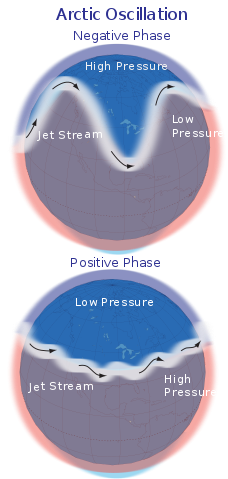
Mars [image credit: NASA]
– – –
Annular modes explain much of the internal variability of Earth’s atmosphere but have never been identified as influential on other planets, says Sci-News.
On Earth, the regularity of storm systems in the middle latitudes is associated with what is called an annular mode — a variability in atmospheric flow that is unrelated to the cycle of seasons.
Annular modes affect the jet stream, precipitation, and cloud formations across the planet.
They explain up to one-third of the variability in wind-driven ‘eddies,’ including blizzards in New England and severe storm outbreaks in the Midwest.
In a new study, Yale University researchers Juan Lora and J. Michael Battalio found that annular modes on Titan and Mars are even more influential than they are on Earth.
They appear to be responsible for up to half of the wind variability on Mars and two-thirds of the wind variability on Titan.
“Methane clouds and surface changes caused by methane rain on Titan have been observed before,” Dr. Lora said.
“And now it seems these events are connected to shifts of Titan’s strong jet stream, influenced by its annular modes.”
“The fact that we have found annular modes on worlds as different from Earth as Mars and Titan also means they may be ubiquitous in planetary atmospheres, from Venus, to the gas giants or exoplanets,” Dr. Battalio said.
Full article here.






Some proper science. Next, how they cause globular warning….
The annular modes are hemispheric scale patterns of climate variability.
What a nice invention. Now we can discuss scientifically something we don’t understand at all. Grants are on the way.
More background…
Annular Modes of Variability in the Atmospheres of Mars and Titan
J. Michael Battalio, Juan M. Lora
Annular modes explain much of the internal variability of Earth’s atmosphere but have never been identified on other planets. Using reanalyses for Mars and a simulation for Titan, we demonstrate that annular modes are prominent in the atmospheres of both worlds, explaining large fractions of their respective variabilities. One mode describes latitudinal shifts of the jet on Mars, as on Earth, and vertical shifts of the jet on Titan. Another describes pulses of midlatitude eddy kinetic energy on all three worlds, albeit with somewhat different characteristics. We further demonstrate that this latter mode has predictive power for regional dust activity on Mars, revealing its usefulness for understanding Martian weather. In addition, our finding of similar annular variability in dynamically diverse worlds indicates its ubiquity across planetary atmospheres, opening a new avenue for comparative planetology as well as an additional consideration for characterization of extrasolar atmospheres.
https://arxiv.org/abs/2102.10463
– – –
The Arctic oscillation (AO) or Northern Annular Mode/Northern Hemisphere Annular Mode (NAM) is a weather phenomenon at the Arctic poles north of 20 degrees latitude. It is an important mode of climate variability for the Northern Hemisphere. The southern hemisphere analogue is called the Antarctic oscillation or Southern Annular Mode (SAM). The index varies over time with no particular periodicity, and is characterized by non-seasonal sea-level pressure anomalies of one sign in the Arctic, balanced by anomalies of opposite sign centered at about 37–45° N.
https://en.wikipedia.org/wiki/Arctic_oscillation
– – –
Annular Modes Website
https://www.atmos.colostate.edu/~davet/ao/introduction.html
Wikipedia’s graphic…

[…] Study: Mars and Titan have annular atmospheric modes […]
Interesting. Another attempt to redefine. Such as climate, being weather. And weather outside, being climatic extreams. And the renaming of events to new discoveries.
Reblogged this on Druid Reborn.